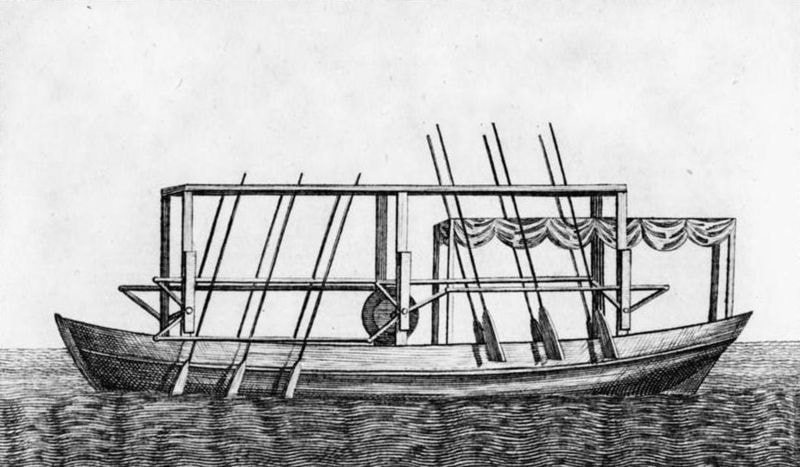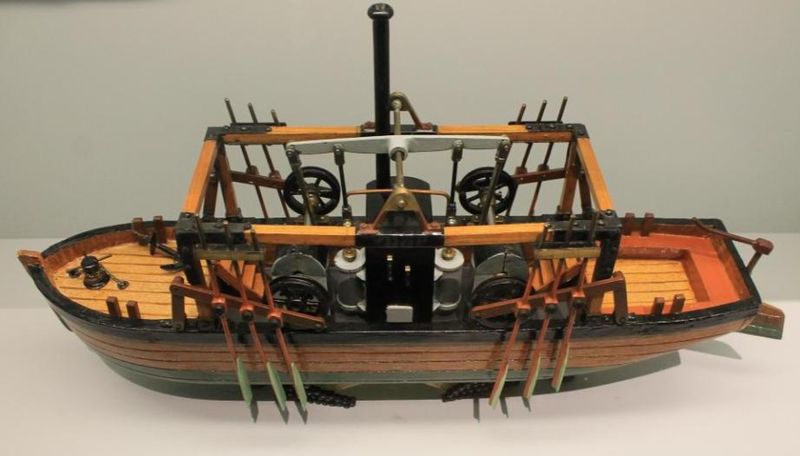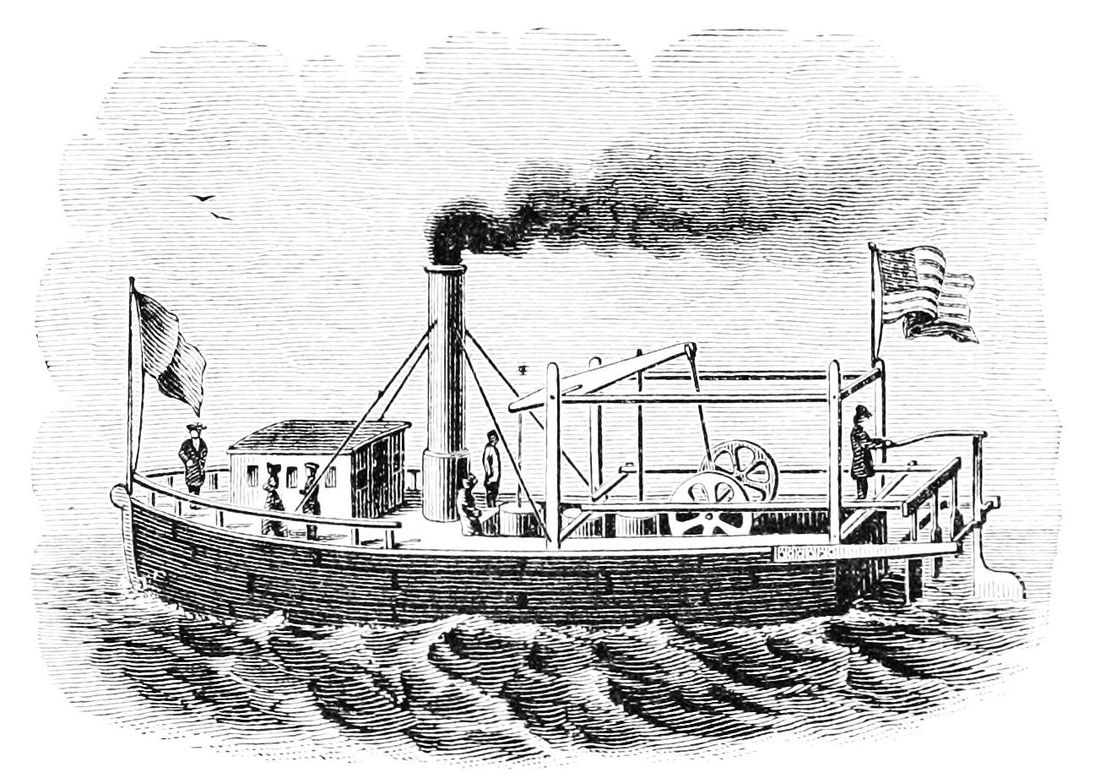The purpose of a steam-powered boat was more productively move upstream or downstream, no matter the conditions of the weather or the tide. It would revolutionize river travel, shipping, and trade. John Fitch, a jack-of-all-trades from Windsor, Connecticut, would take up the challenge of launching the first successful sail.
John Fitch, 1743 - 1798
Born in 1743, John Fitch grew up an apprentice to a clockmaster. He then went from watchmaker to silversmith to serving in the American Revolution.
As a surveyor after the war, Fitch was captured by Indians, turned over to the British, and eventually released. 3 years later in 1785, Fitch began conceptualizing the idea for a steam-powered boat. |
The First Design
|
Fitch's first design, comprised of a two sets of three paddles on either side of the boat, was inspired by dreams of Indian warrior canoes chasing him. With the help of clockmaker and inventor Henry Voigt, he built the first functioning steam engine in 1785.
|
Fitted to a 45-foot boat, Fitch showcased his new engine's abilities along the Delaware River in the presence of members of the Constitutional Convention.
|
Later Design
In later years, he was able to successfully sail a 60-foot steam-powered boat utilizing the same concept. This version traveled around 7 miles per hour and began making regular trips between Philadelphia and Trenton.
A lack of sufficient financial support from Congress prevented the long-term use of Fitch's steamboat, and others soon began to innovate its design. |
Proheat is proud to be an authorized distributor of the best industrial heater manufacturers in America. We provide companies throughout the US with heating products including band heaters, cartridge heaters, strip heaters, tubular heaters, immersion heaters, and more. We are dedicated to providing excellence in distribution.




